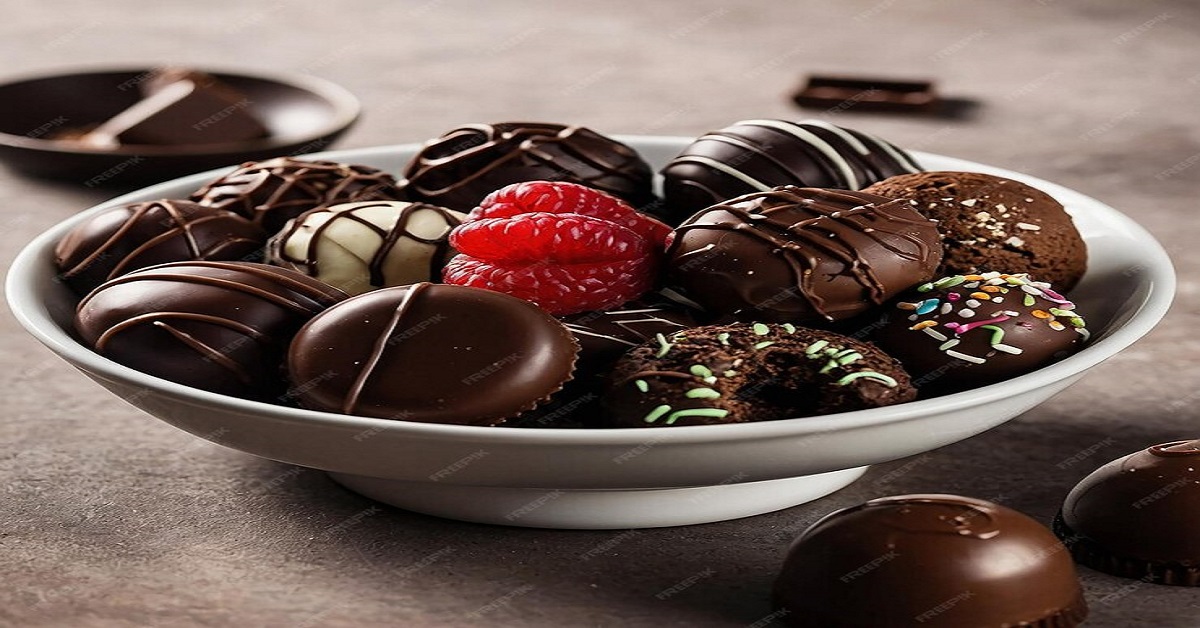Chocolate, a beloved confectionery enjoyed worldwide, is a product made primarily from cocoa beans. It comes in various forms and flavors, each offering a unique experience.
Origin and History
Chocolate has a rich history that dates back thousands of years. Its origins trace back to the ancient civilizations of Mesoamerica, particularly the Olmec, Maya, and Aztec cultures. These societies were among the first to cultivate cacao trees and use the beans to create a bitter drink known as “xocoatl,” which was often flavored with spices and enjoyed during religious and ceremonial events.
The cacao beans were so valuable that they were used as a form of currency in Aztec society. It wasn’t until the Spanish conquest of the Americas that chocolate was introduced to Europe, where it underwent significant transformations. The addition of sugar and milk transformed the bitter drink into the sweet and creamy chocolate we know today.
Types of Chocolate
Chocolate comes in various types, each with its distinct characteristics:
1. Dark Chocolate
Dark chocolate is known for its rich flavor and high cocoa content. It typically contains cocoa solids, cocoa butter, and sugar, with little to no milk solids. It’s often enjoyed for its deep, intense flavor and is believed to have health benefits due to its high levels of antioxidants.
2. Milk Chocolate
Milk chocolate is sweeter and creamier than dark chocolate. It contains milk solids in addition to cocoa solids, cocoa butter, and sugar. The milk solids contribute to its smoother texture and lighter color.
3. White Chocolate
White chocolate does not contain cocoa solids, which means it lacks the characteristic chocolate flavor found in dark and milk chocolates. Instead, it is made from cocoa butter, milk solids, and sugar, giving it a creamy texture and sweet taste.
4. Ruby Chocolate
Ruby chocolate is a relatively new variety, introduced in 2017. It’s made from specially processed cocoa beans that give it a distinctive pinkish-red color and a berry-like flavor. It falls between milk and dark chocolate in terms of sweetness and richness.
Production Process
The process of making chocolate involves several key steps:
- Harvesting: Cocoa beans are harvested from the cacao tree pods, which are then fermented to develop their flavor.
- Drying: The fermented beans are dried in the sun to reduce moisture content.
- Roasting: The dried beans are roasted to enhance flavor and make the shells easier to remove.
- Cracking and Winnowing: The roasted beans are cracked open to separate the nibs (the edible part) from the shells. The nibs are then ground into a cocoa mass or chocolate liquor paste.
- Conching: The chocolate mass is refined further through conching, a process that involves heating and continuous stirring to develop a smooth texture and rich flavor.
- Tempering: The chocolate is carefully cooled and reheated to stabilize the cocoa butter crystals, ensuring a glossy finish and smooth texture.
- Molding and Cooling: Finally, the tempered chocolate is poured into molds and cooled to solidify.
Health Benefits and Considerations
Chocolate, especially dark chocolate, is often associated with several health benefits due to its high antioxidant content. Some studies suggest that moderate consumption of dark chocolate can improve heart health, boost brain function, and enhance mood.
However, it is important to consume chocolate in moderation, as it can be high in sugar and fat, which may contribute to weight gain and other health issues if consumed excessively.
Culinary Uses
Chocolate is a versatile ingredient used in a wide array of culinary creations:
- Baking: Chocolate is a key ingredient in many baked goods, including cakes, cookies, and brownies.
- Confectionery: It is used to make a variety of candies and treats, such as truffles, bars, and bonbons.
- Beverages: Chocolate is the base for many drinks, from classic hot chocolate to elaborate chocolate martinis.
- Savory Dishes: In some cuisines, chocolate is used in savory dishes to add depth and complexity to flavors, such as in mole sauces.
Conclusion
Chocolate is more than just a sweet treat; it has a rich history, a diverse range of types, and a complex production process. Whether enjoyed as a simple bar, a gourmet confection, or an ingredient in cooking, chocolate continues to captivate and delight people around the globe.
I hope this gives you a comprehensive overview of chocolate! Let me know if you need more information or details on any specific aspect.
